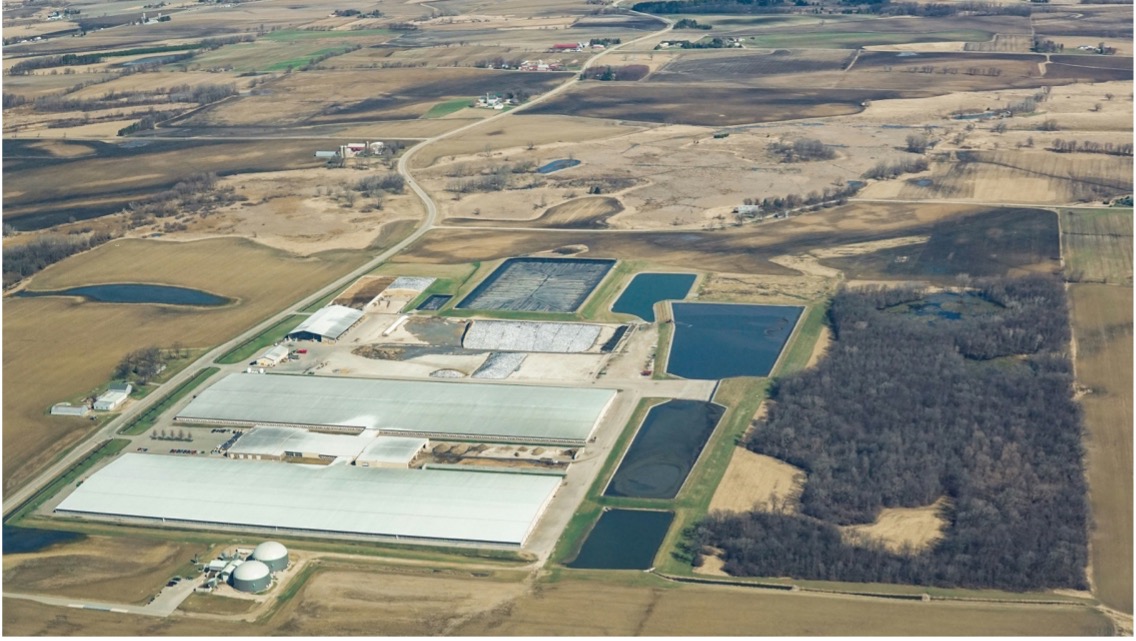
Environmental Attorneys Push Vermont to Take CAFOs Seriously
By Julia Wickham
Americans eat meat. And lots of it. To satisfy consumer demand, land use needs, and workforce availability, concentrated animal feeding operations (“CAFOs”) are the predominate means of livestock production in the United States. Recently, a coalition of environmental groups brought suit against the EPA for their lack of Clean Water Act (“CWA”) oversight surrounding CAFOs. For example, Iowa has 4,025 “large” CAFOs according to the EPA. Iowa Department of Natural Resources considered over half of Iowa’s lakes, reservoirs, rivers and streams impaired. Iowans fear their climb to second place for highest cancer incidents in the nation correlates to the density of large animal operations and runoff infiltrating the water.
Yet, one of the most recent EPA interventions of CAFO pollution is in Vermont–home to only 37 “large” CAFOs. In September, the EPA ordered Vermont to control pollution from CAFOs and adhere to the CWA. The lax state regulations allow CAFOs to dump phosphorus into waterways, resulting in water quality issues such as cyanobacteria blooms in Lake Champlain. At first glance, EPA’s investigation and mandate regarding Vermont’s agricultural pollution seems misplaced given the relatively small number of CAFOs in the state. However, this federal scrutiny is clearer when considering Vermont’s status as home to one of the nation’s leading environmental law schools, which trains attorneys to advocate for stronger environmental oversight.
Starting in 2008, a Vermont Law School Clinic filed a petition asking the EPA to withdraw approval for the Vermont Agency of Natural Resources (ANR) to administer the National Pollutant Discharge Elimination System (NPDES) under the Clean Water Act. Vermont Law School cited numerous concerns with how ANR issued and enforced discharge permits to prevent water pollution. In response, EPA issued a 2013 Corrective Action Plan calling on ANR to improve various aspects of its NPDES program. However, nearly ten years later, the Conservation Law Foundation, Vermont Natural Resources Council and the Lake Champlain Committee filed a petition with the EPA voicing similar concerns to Vermont Law School’s 2008 petition. In response, the EPA launched another investigation and released the most recent demand letter in September 2023, requiring Vermont to change how the state regulates farms—specifically CAFOs.
Currently, Vermont law divides jurisdiction over agricultural water quality between ANR and the Agency of Agriculture, Food, and Markets (“AAFAM”). The agencies have attempted to manage the division of jurisdiction through Memoranda of Understandings (“MOUs”), dating back to the 1990s, updated in 2009, and again in 2017. In their most recent letter to ANR, the EPA determined this current division of responsibilities to be “preventing Vermont from adequately addressing agricultural water quality.”
Vice President of the Conservation Law Foundation (“CLF), Elena Mihaly, graduated Vermont Law School in 2013 with a J.D. and Masters in Environmental Law and Policy. In the investigation prior to submitting the formal 2022 petition to the EPA, Mihaly reported that CLF found glaring oversights from both ANR and AAFAM, including examples of email feuds over which agency had jurisdiction.
In December 2024, ANR sent a proposal for agency restructuring to the EPA. This would create a new permitting process for Vermont farmers overseen by ANR instead of initial inspections done by AAFAM with referrals to ANR. If the proposal is accepted by EPA, both agencies will participate in on-farm inspections, but ANR will take the lead. This 2025 Legislative Session, Vermont Legislators could provide more funding for state agency staff or draft legislative fixes for the overlapping delegation of authority.
The EPA’s focus on Vermont’s regulation of CAFOs may surprise others in states like Iowa where confinement barns dot the landscape, and there is 1 Iowan for every 7.3 hogs. However, Midwestern states have not fostered generations of environmental attorneys and advocates at their law schools. It has taken repeated attempts over nearly two decades to address the gaps in enforcement and oversight of the CWA in agricultural pollution in Vermont. However, because of Vermont Law School alumni and the Vermont Law School Clinic, Vermont is one step closer to having cleaner water. Vermont provides a framework demonstrating how a law school, dedicated to public service can push for change—if any young lawyers are looking to make some noise, Iowa’s wide open.

